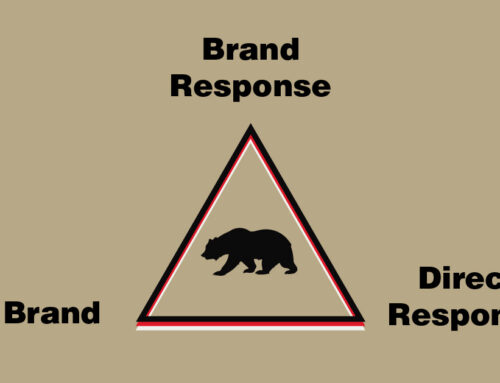10 Essential Elements of Brand Identity

Your company’s brand is your most important asset. So, it’s key to develop a strong brand identity that helps you build a brand people love.
At GNNR, our team has worked with brands large and small – from Fortune 500 to SMB’s. If there’s one thing we’ve learned from working with successful brands over the years, it’s that: Strong brand identities inspire people.
I’m going to break down the 10 essential elements to build a strong brand identity that inspires people.
But first, lets create the right context by answering three important questions:
Question #1: What is a brand identity?
Question #2: Who uses a brand identity?
- Brand Stewards:
Employees, creative partners, vendors and anybody else working on behalf of your brand. They communicate your values and build your brand through action.
Question #3: What are the benefits of a strong brand identity?
-
Helps You Stand Out in a Crowded Marketplace
Your competition is out there and they want your customers. Your brand identity allows you to stand out from your competition and show why you’re better. If a prospective customer in the decision stage views you and your competitors offering equally- it’s their affection for your brand that will be the x-factor in their decision.
-
Helps You Provide a Consistent Experience
That’s a lot of touches. So it’s important those touches are optimized. You should always aim to provide a consistent experience along the entire buyers journey. A great brand identity sets the tone for developing memorable content and experiences consistently.
Now that we have context, let’s explore the 10 Essential Elements and why they’re important to your brand stewards and audience.
1. Story
People love a good story. Tell yours.
Your brand story, tells the story of your company’s origins and aspirations. Brand stories, like any good story, are best told in a narrative format:
- Introduce the status quo. Talk about the current market conditions your industry was facing at your inception.
- Add conflict. Address the problem your customers are challenged with.
- Have a resolution. Talk about your solution and its impact on your customers.
Your brand story is where you first introduce your personality, positioning, mission, and vision.
Why it’s important:
For your brand stewards – They will understand you better through storytelling than any other format. Knowing your story allows them to leverage it in their brand building, marketing and advertising efforts.
For your audience – Your brand story helps to humanize your company and build credibility. This helps them form a stronger connection with your brand.
Below is the brand story of our client, Perfect Point:
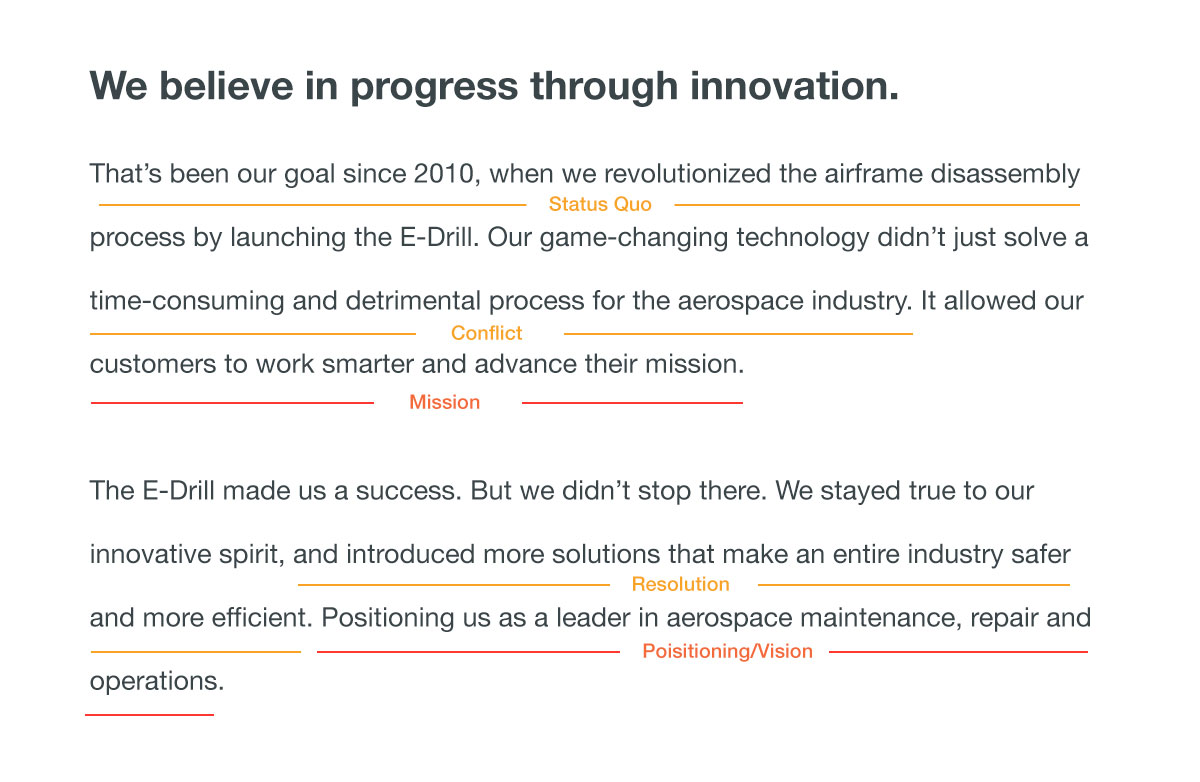
2. Logo
Your logo is the most recognizable element of your brand. It needs to be simple, memorable, appropriate and unique. So it’s important to pay close attention to the style and meaning that goes into it.
We find a great way to design a logo with meaning is to pull inspiration from your story, persona, and value proposition. There are a few stylistic categories you can apply to your logo to make it familiar and powerful.
Here are some popular categories for logo design:
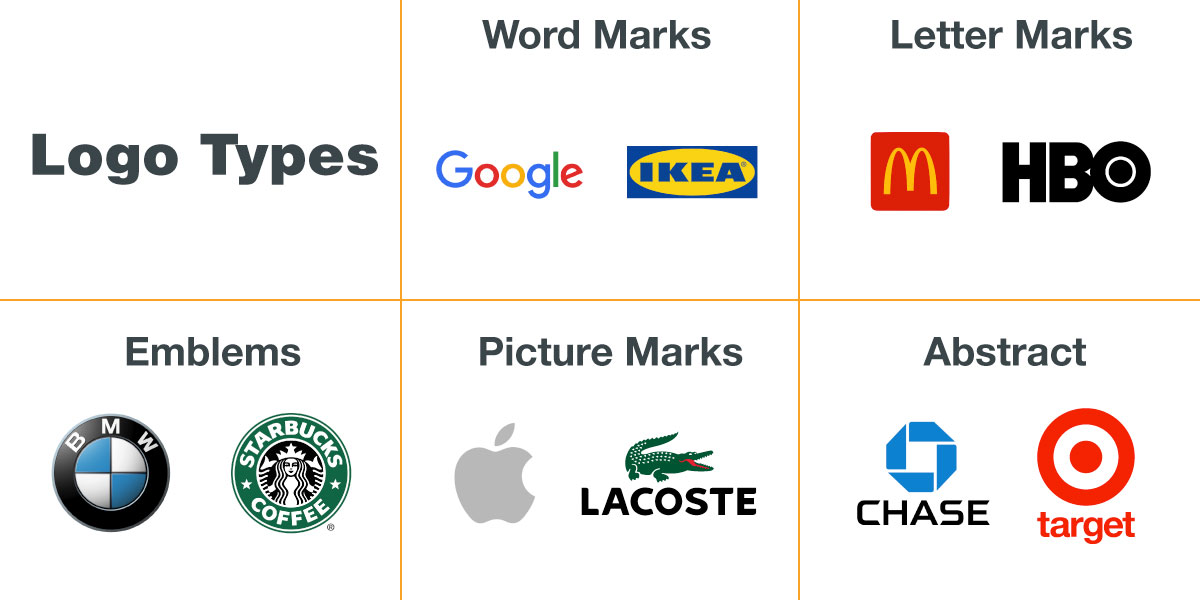
Remember: Without the brand building efforts behind it, your logo is just a fancy design.
Think about McDonald’s golden arches. Sure, red and yellow are well thought out for visibility. But the golden arches give us the warm and fuzzies because of a childhood of hot salty goodness.
3. Vision & Mission
Your vision and mission are the ideas behind your company that help define its future. For branding purposes we recommend articulating your vision and mission in short, focused, statements.
Your Vision answers why you do what you do. It’s an aspirational summary of why you exist and should entail your higher purpose.
Your Mission is an actionable statement. It summarizes what you do to achieve your vision.
For inspiration let’s look at Nikes vision and mission statement (one of my favorites):
Nike
Mission statement:
Create groundbreaking sports innovations, make our products sustainably, build a creative and diverse global team, and make a positive impact in communities where we live and work.
Vision statement:
Bring inspiration and innovation to every athlete* in the world.
*If you have a body, you are an athlete.
Why it matters:
For your brand stewards and audience – It lets them know that they belong to something bigger than themselves. Remember, people buy things that make them feel good. Having both employees and customers supporting your vision and mission increases brand equity, and in turn, growth.
4. Core Values
Your core values are the principles your company uses to guide decision-making, actions and behavior. You’ve been using your core values as a compass to build success through action. Now it’s time to articulate that.
Think about the little things you do, the intangibles, that define your culture of success. Use these to write your core value statements. Less is more here, so try to limit it to between 5-10.
Here are some common core values, as thought starters:
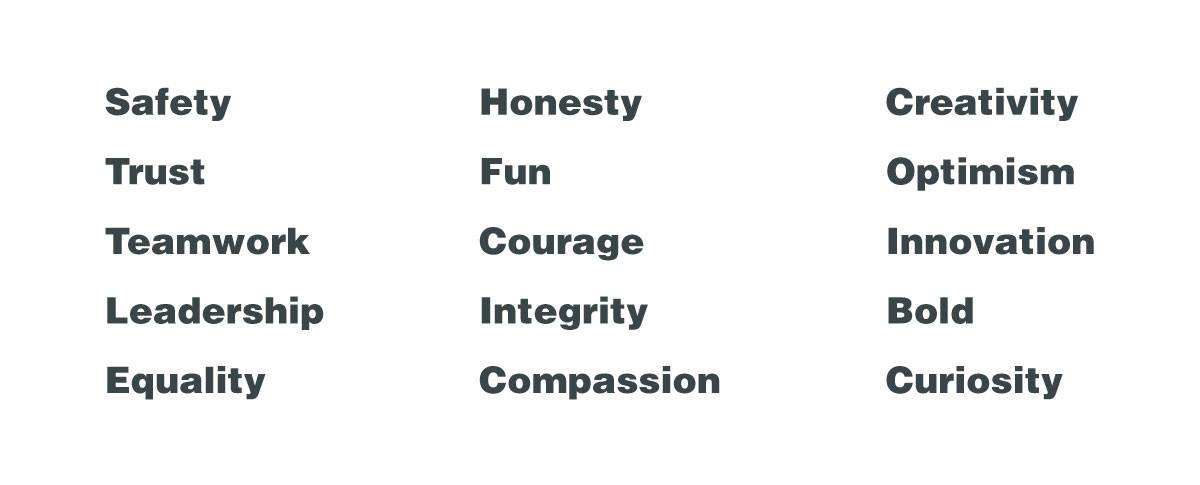
As an example, here are Coca-Cola’s core values:
Coca-Cola Core Values
Leadership: The courage to shape a better future
Collaboration: Leverage collective genius
Integrity: Be real
Accountability: If it is to be, it’s up to me
Passion: Committed in heart and mind
Diversity: As inclusive as our brands
Quality: What we do, we do well
Why it matters:
For brand stewards and audience – Your values create buy-in and alignment. When your core values are shared by your stewards and audience, you create a more meaningful connection. Allowing your brand to resonate on a deeper level.
5. Positioning
Brand positioning is the space you occupy in your audiences mind and how you want them to think of you. Positioning defines your place in the market, the problem you solve, and how you differentiate from the competition.
Look to your companies value proposition to inspire your brand positioning.
And start by answering some key questions:
- What is my brand offering?
- What problem does my brand solve for customers?
- What companies compete with my brand to solve this same problem?
- What sets my brand apart from competitors?
Once you’ve answer these question, you can start developing your positioning statement using this template:
For [your target market] who [target market need], [your brand] is a [category] that offers [point of difference] so customers can [end benefit] because [reason to believe.]
Why it matters:
For your brand stewards and audience – It lets them know two things, what makes you different and why you’re better than the competition. Positioning is about perception. It helps you create emotional positioning in peoples minds.
6. Persona
Your brand persona is the combination of human-like traits that your brand embodies. This often overlooked element helps your brand be authentic and relatable. So it’s important to include.
The best way to develop your personality is to think of your brand as an actual person.
If your brand was a person…
- How would someone describe your company after they come in contact with it?
- What are the words and statements you want them to use?
You can use the personality framework below to help find answers:
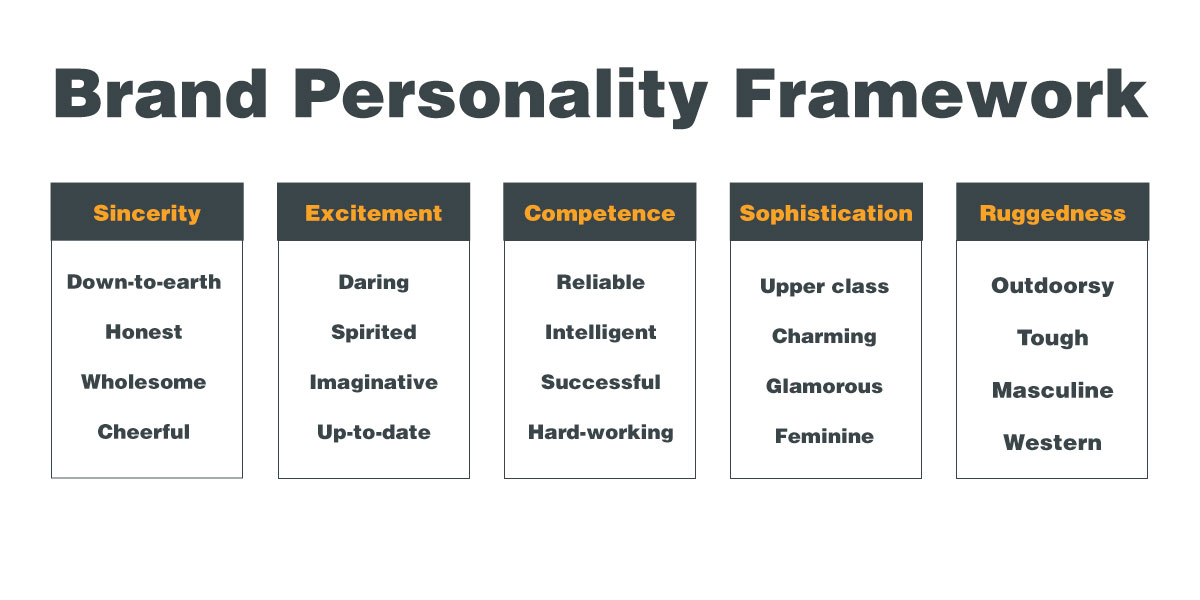
This framework is a great jumping off point, don’t be afraid to go outside of it.
It’s important to be appropriate and relatable to your audience and industry. But challenging conventions can help set you apart.
Why it matters:
For your brand stewards – Defining your brand personality allows them to create consistency in how they communicate. We’ve also seen personality trickle backwards into company culture.
For your audience – They expect a more human experience from brands. Having a strong persona allows you to exceed those expectations. Making your brand more relatable, leads to more meaningful connections with your audience.
7. Tone of Voice
Your brands tone of voice is an extension of your persona. If you think of your persona as a strategy – then your tone of voice is the execution.
Establishing your tone of voice provides guidelines on how all communications should be executed. This is especially important when you consider how many channels you need to connect with your audience on(blog, social media, email, sales collateral, advertisements, video ect.). Your voice should be appropriate, relevant, and true to your persona.
The first step in creating your tone of voice is to define your three key attributes:
- Character – Friendly | Warm | Inspiring | Playful | Authoritative | Professional
- Tone – Personal | Humble | Clinical | Honest | Direct | Scientific
- Language – Complex | Savvy | Serious | Fun | Conversational | Whimsical
Next, write the guidelines for how your attributes should be executed. Here’s an example:
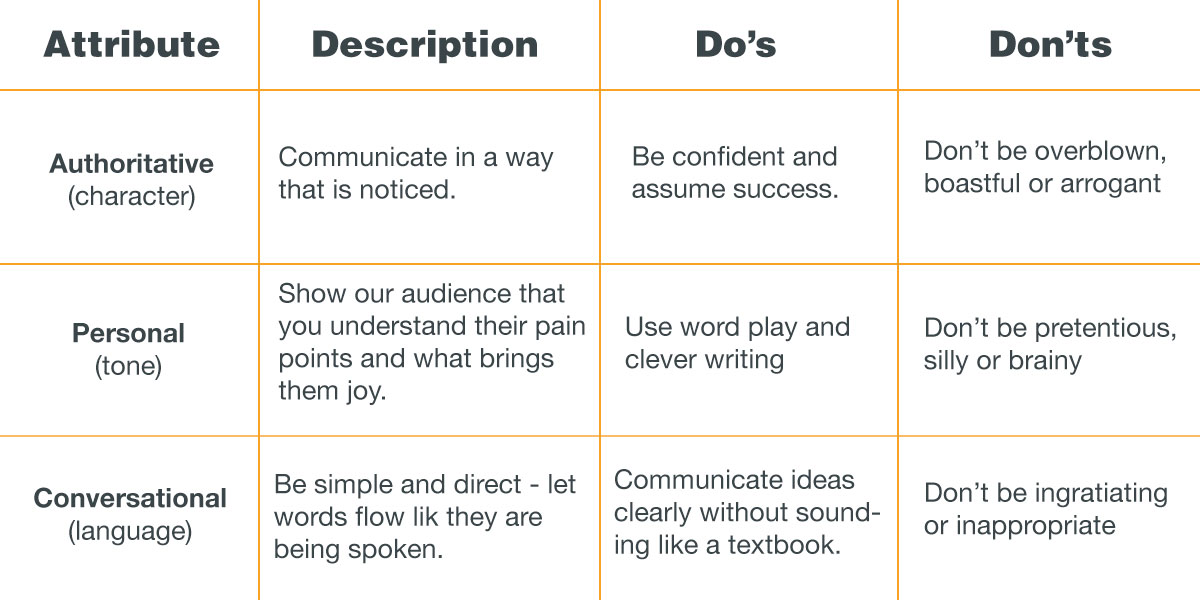
Why it matters:
For your brand stewards – Your tone of voice provides them guidelines on how all communications should be executed. The majority of their activities focus on educating, informing, and entertaining your audience. Having an established tone of voice allows them to create consistency.
For your audience – Creating a consistent voice at every touchpoint and channel makes you relatable and memorable. There are fewer things more important.
8. Color Systems

First impressions are important.
Colors evoke emotions, feelings and hold meaning in the subconscious. Having the right color palette helps customers identify and start to understand you before reading one word of copy.
When developing your color palette you should aim to choose colors that evoke the right emotions while differentiating you from the competition. Think about what amplifies your persona while being appropriate to your target audience.
Here is some theory on common colors:
Red – danger, excitement, energy, love, and passion.
Pink – feminine, sentimental, romantic, youthful.
Orange – fresh, creative, and adventurous.
Yellow – optimistic, playful, and happy.
Green – growth, renewable, natural, prestige, and wealth.
Blue – trustworthy, reliable, calm.
Purple – royalty, nobility, luxury, power and ambition.
Brown – honest, organic, security, safety, and dependability.
White – purity, simplicity, innocence and cleanliness.
Black – sophisticated, elegant, luxury, and power.
Why it matters:
For your brand stewards – Your color systems allow them to create consistency across every touchpoint in their communications. Making you more recognizable. Besides your logo, your brand colors are the most recognizable element of your brand.
For your audience – When combined with your other brand elements, your colors will boost recognition.
9. Typography
Typography is the key visual element in your brands written communication. Typography goes beyond just providing legibility and consistency. It aligns your written copy with your brand persona.
From headlines to body copy, your typography can be as simple or complex as you like. But like all visual elements of your brand – it should be inspired brands personality and voice.
Here’s some simple guidance on creating consistent typography:
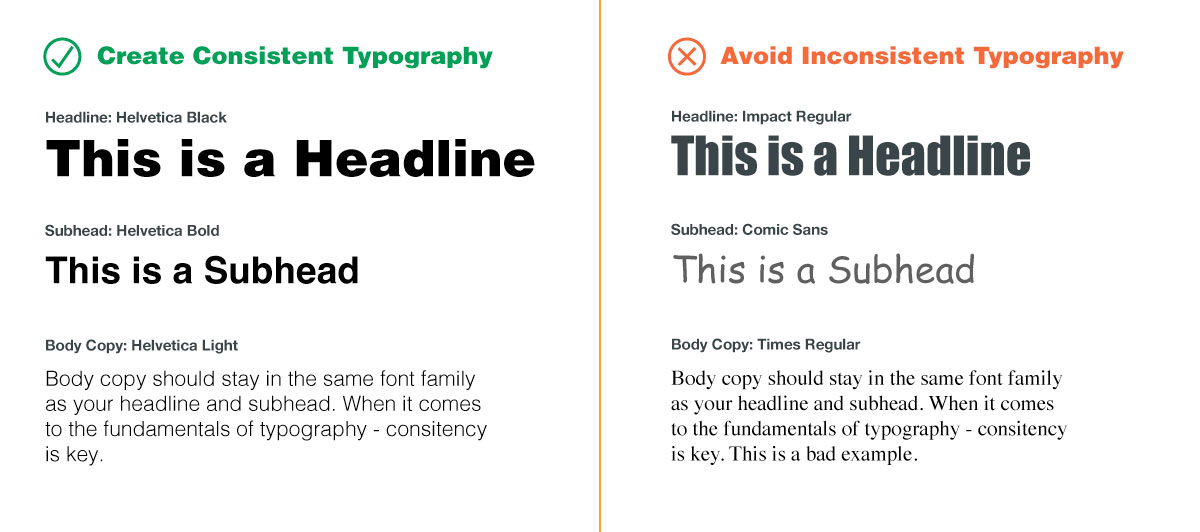
Why it matters:
For your brand stewards and audience – Your typography provides another element that creates consistency across all communications. You don’t want one person writing in Comic Sans while another is writing in Helvetic.
Note: Typography can be a lot more complex and amazing than what we’ve stated above. It really is it’s own art form. The purpose of this article is provide the foundational elements to build a strong brand. Not to introduce complex creative executions. Fundamentals come first.
10. Imagery
A picture says a thousand words
Your brand imagery defines the visual style you use across your communications. It provides guidance on how to implement photography, product images, graphic design, and how to combine your other identity elements(like color, typography and logo) to create visual communications.
No other visual brand element will embody your personality like your imagery. It’s by far the most prominent. Think about how many images you saw yesterday. Make sure to put your best foot forward when developing it.
To create strong brand imagery – focus on the story you’re telling to connect with your audience.
Here is an example of Audi’s imagery: You get a good idea of who they target, how they capture their product, and position their brand.

Why it matters:
For your brand stewards – It allows them to create consistency along the entire buyers journey. Contrary to popular belief, for your creative vendors, guidelines actually motivate their best work.
For your audience – It provides a consistent brand experience that differentiates you from the competition. Visual storytelling is an important part of connecting with them on an emotional level. To your prospective customers, your imagery will be the first impression of the quality you offer.
Note: With stock photo’s and penetrating every marketing execution, be careful not to fall into a sea of sameness. Pull inspiration from every other brand element to help you develop imagery that enhances your persona and offering. Remember – Quality Matters.
Conclusion
Whether you’re launching a new brand or are considering a refresh – use the 10 Essential Element to build a strong brand identity. Most importantly, make sure each of the elements work together to inspire your Brand Stewards and Audience.
![Copywriting That Converts: 7 Frameworks [with Examples]](https://gnnrcompany.com/wp-content/uploads/2023/05/8BestCopywriting_Hero-500x383.png)

